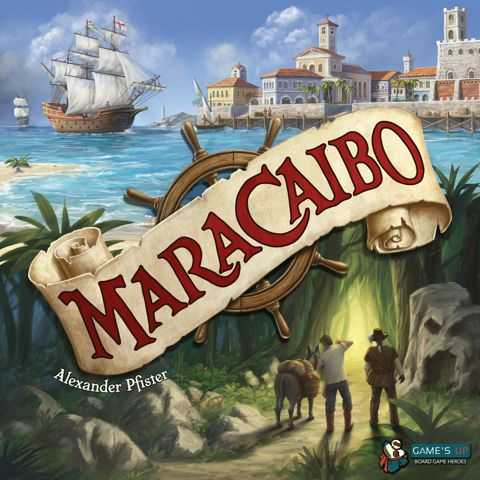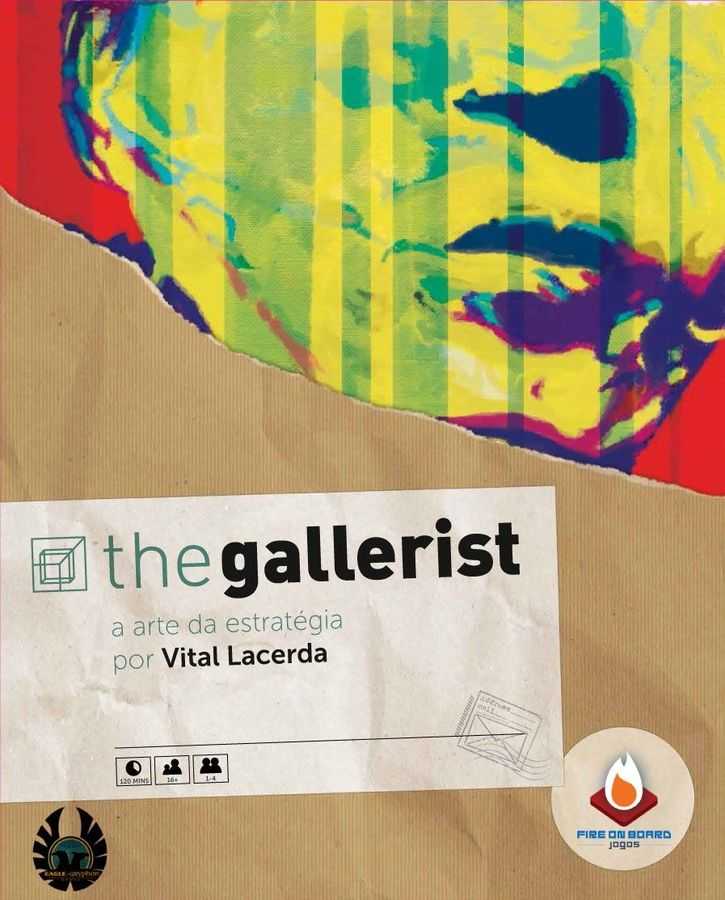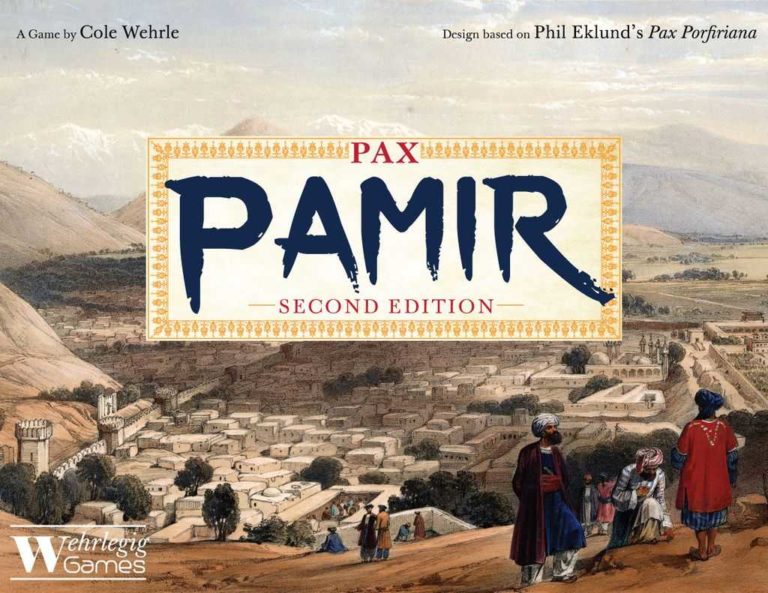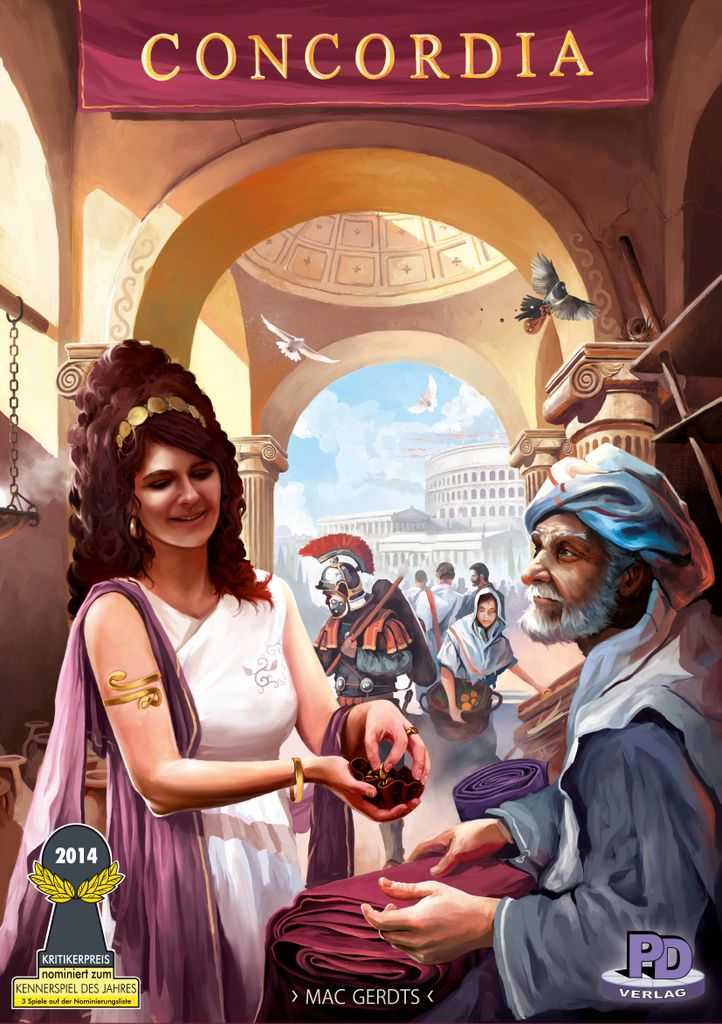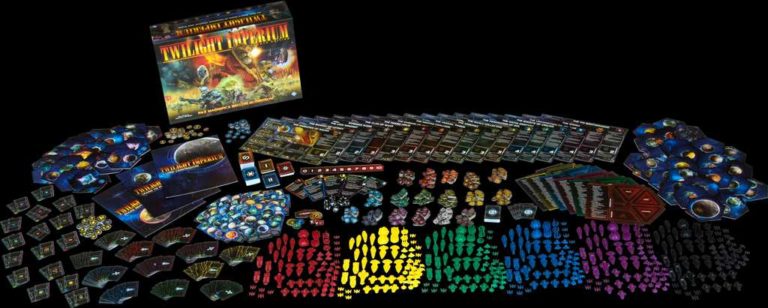In-Depth Maracaibo Review For Board Game Enthusiasts
In-Depth Maracaibo Review For Board Game Enthusiasts
Diving into the vibrant and intricate world of Maracaibo offers board game enthusiasts a window into the era of Caribbean exploration, with a twist of strategy that Alexander Pfister is renowned for. From my very first play, I was captivated by the game’s depth, complexity, and the numerous paths to victory it presented. This Maracaibo review aims to shed light on the game’s mechanics, components, and themes, and share some of the exhilarating experiences it has provided me and my fellow gamers. Over the years, my quest for board games that challenge the intellect and stir the imagination has led me to countless tables, sprawled with cards, pieces, and passionate players. Maracaibo, with its rich gameplay and challenging strategies, stands out as a gem in my collection, promising and delivering hours of engaging play.
Key Points:
- Maracaibo offers deep gameplay with numerous paths to victory.
- The game components are high-quality and immersive, enhancing the thematic experience.
- Players navigate the Caribbean, engaging in quests, battles, and trades.
- Having a flexible strategy is key to winning in Maracaibo.
- The solo play mode provides a challenging and dynamic experience.
- Maracaibo’s complexity may pose a challenge for beginners but offers a rewarding experience.
- The game’s thematic depth and strategic gameplay set it apart from other board games.
Through countless game nights, I’ve ventured into the heart of the Caribbean, navigating its challenges and reveling in its rewards. Each playthrough peels away another layer, revealing deeper strategies and more intricate gameplay, making Maracaibo a game that keeps on giving. The learning curve, reminiscent of other heavyweight euro games, initially posed a challenge, but the satisfaction of mastering its complexity has been immensely rewarding. This review draws from these experiences, aiming to guide newcomers and veterans alike through Maracaibo’s nuanced world.
Unboxing Maracaibo
The experience of unboxing Maracaibo is akin to opening a treasure chest, brimming with components that promise adventure and strategic depth. Lifting the lid, you’re greeted by a plethora of cards, tokens, and boards, each more inviting than the last. As you delve deeper, the anticipation builds, setting the stage for the memorable gaming sessions that await.
Components and Quality
Upon unboxing Maracaibo, the first thing that strikes you is the sheer volume and quality of the components. Alexander Pfister’s games are known for their complexity and depth, and Maracaibo is no exception. The components not only serve functional aspects of gameplay but also enhance the thematic experience, transporting players directly into the bustling ports and mysterious seas of the Caribbean. Here’s a breakdown of what you’ll find inside:

- A large, double-sided game board illustrating the Caribbean sea and its bustling ports.
- Over 200 beautifully illustrated cards, including project cards, personal achievement cards, and more.
- Custom wooden pieces for ships, explorers, and influence cubes, each colored to match player factions.
- Intricately designed player boards, allowing for easy tracking of progress and resources.
- High-quality cardboard tokens for goods, victory points, and other in-game currencies.
- A comprehensive rulebook, detailed yet accessible, guiding players through setup, gameplay, and scoring.
The bustling ports and mysterious seas of the Caribbean are brought to life with each piece, from the detailed cards to the custom wooden tokens. Setting up the game feels like setting sail on an expedition, as each component plays a critical role in the immersive experience Maracaibo provides. The attention to detail in the production of these components speaks volumes about the care and thought put into the game’s design.
The attention to detail in the components of Maracaibo enhances the immersive experience of setting sail on a Caribbean expedition, reflecting the care and thought put into the game’s design.
Artwork and Theme
The artwork and theme of Maracaibo are nothing short of a visual and thematic voyage, drawing players into the heart of the 17th-century Caribbean. The game board and cards are adorned with vibrant colors and intricate illustrations, encapsulating the spirit of exploration, conquest, and adventure that defined the era. Each card tells a story, from the daring explorers setting sail into the unknown, to the bustling marketplaces trading goods from across the globe.

The theme of exploration and conquest is woven through every aspect of Maracaibo, from the mechanics to the artwork. Players find themselves not just competing for victory points, but also navigating historical narratives and weighing the moral implications of their actions in a colonized Caribbean. While the game does not shy away from the darker aspects of this history, it provides a platform for reflection and discussion among players. This thoughtful approach to theming further enriches the gameplay, making each turn a step through history as much as a strategic move on the board.
Diving Into Gameplay
The gameplay of Maracaibo is a rich tapestry of strategy, luck, and timely decision-making. Each turn offers a multitude of options, from advancing your ship around the Caribbean to engaging in quests, battles, and trades. The depth of the gameplay ensures that no two sessions are the same, providing endless opportunities for strategic exploration.
How to Play Maracaibo
Learning how to play Maracaibo is an adventure in itself, with each game revealing more layers and depths to its strategy. Here’s a simple overview to get you started:
- Set up the game by placing the board, sorting the cards, and distributing player components.
- Determine player order and begin the game, with each player, in turn, moving their ship around the Caribbean.
- On your turn, choose to move your ship up to seven spaces, engaging in various actions where you land. These actions can include:
- Visiting cities to fulfill quests or buy goods.
- Engaging in combat: Choose to fight using your captain’s strength or engage with one of the nations.
- Exploring: Use explorers to venture into new territories for bonuses.
- Utilize project and specialist cards in your hand for powerful effects and bonuses.
- Play continues until all players have reached the end of the round track, signaling the end of the game round.
- Calculate scores based on quests completed, influence gained, and other bonuses.
Each turn in Maracaibo feels like a pivotal decision in a larger narrative, with every action influencing your options on subsequent turns. Balancing immediate gains with long-term strategy becomes a thrilling challenge, as you navigate the Caribbean, battle opponents, and build your empire. Maracaibo’s gameplay is a testament to the depth and craftsmanship of Alexander Pfister’s design, offering a gaming experience that is both intellectually stimulating and immensely satisfying.

Mastering Maracaibo involves navigating a complex web of strategic decisions, where every move shapes your path to victory in the Caribbean.
Strategies for Victory
In Maracaibo, having a flexible strategy that can adapt to the shifting game dynamics is key to claiming victory. It’s not just about focusing on one aspect of the game, such as completing quests or dominating the influence track. Diversifying your approaches can pay off significantly by the end. For instance, investing in a balanced mix of ship upgrades, crew members, and exploring the vast Caribbean offers more opportunities to score points from varied sources. Remember, keeping an eye on your opponents’ moves and adjusting your strategy accordingly can also provide a competitive edge.
To illustrate this point, here is a simple table displaying a few strategic layers one should consider:
| Strategic Layer | How to Implement |
|---|---|
| Quest Completion | Focus on gathering the specific cards and goods required for quests early on. |
| Influence | Secure a strong presence on the influence tracks related to nations you’re supporting. |
| Ship Upgrades | Invest in upgrades that align with your overarching strategy for point maximization. |
| Crew Recruitment | Recruit crew members that offer synergies with your current assets and strategies. |
Solo Play Overview
Maracaibo stands out for its excellent solo play mode, designed with multiple difficulty settings. This allows the game to introduce hundreds of deck permutations, ensuring that each solo session feels fresh and presents a new challenge. The solo mode play is akin to playing against an invisible yet cunning opponent, pushing you to strategize differently and adapt to unpredictable moves.

Furthermore, the game includes a campaign mode that greatly enhances replayability and holds the player’s interest across solo sessions. The inclusion of historical characters in the campaign adds a layer of depth to Maracaibo‘s solo play, inviting players to immerse themselves further into the Caribbean adventures.
Critical Analysis
In examining Maracaibo closely, it becomes evident that the game’s depth and complexity are double-edged swords. On one hand, they allow for rich strategic layers and a fulfilling sense of accomplishment when everything comes together. However, for some, this complexity leads to a steep learning curve and hurdles in teaching the game to newcomers, potentially limiting its accessibility.
Strengths of Maracaibo
Maracaibo truly shines through its engrossing gameplay and dynamic mechanics, offering players myriad paths to victory. This flexibility means that no two games feel exactly the same, fostering a sense of exploration and strategic depth unrivaled by many board games on the market. Coupled with the vibrant artwork and theme of exploring the Caribbean, it consistently delivers an immersive and engaging experience.

Maracaibo offers a unique and immersive gameplay experience with diverse strategies and exploration opportunities, setting it apart from other board games.
Areas for Improvement
While Maracaibo scores high in strategic depth and thematic engagement, areas ripe for improvement include the integration of the game’s theme with its mechanics and addressing the steep learning curve. A simplification of certain rules without compromising the game’s depth could enhance accessibility. Moreover, diversifying the representation in the game’s cards could address concerns around the theme and inclusivity, making it more welcoming and reflective of the rich histories of the Caribbean.
Comparing to Other Board Games
Maracaibo stands in a unique position when compared to other board games. Here’s a quick list:
- Great Western Trail: While similar in depth and designed by the same creator, Alexander Pfister, Maracaibo offers a more thematic journey through the Caribbean.
- Puerto Rico: Both games explore the colonial Caribbean, but Maracaibo introduces more dynamic mechanics and a solo play option.
- Scythe: Though set in an alternate history, both games share rich strategic depth and low player interaction, yet Maracaibo allows for a more flexible strategy development.
- Pandemic: Differing greatly in theme and mechanics, Maracaibo offers less direct cooperation but a similar level of strategic thinking and planning.
Through this comparison, Maracaibo distinguishes itself with its flexible strategies, thematic depth, and solo play options, marking its territory within the board game landscape.

FAQs
1. Is Maracaibo suitable for beginners?
Maracaibo may present a challenge for beginners due to its complexity and the interconnectedness of its mechanics. Beginners should expect a learning game to fully grasp the rules. However, once understood, Maracaibo offers a rich and rewarding experience.
2. How long does a game of Maracaibo typically last?
A game of Maracaibo typically lasts between 90 to 180 minutes. The duration can vary based on the number of players and their familiarity with the game’s mechanics.
3. Can Maracaibo be played solo?
Yes, Maracaibo can be enjoyed in solo play mode. The game includes a well-designed automa that provides a challenging and engaging experience for solo players.
4. Where can I find expansions or additional content for Maracaibo?
Expansions or additional content for Maracaibo can be found online at the publisher’s website or specialized board game retailers. Keep an eye out for announcements on board game forums and social media for the latest releases.
Conclusion
In this Maracaibo review, we’ve sailed through the highs and lows of a game rich in strategy, thematic depth, and historical context. Maracaibo stands as a testament to Alexander Pfister’s skill in game design, offering pathways to victory that are as diverse as the Caribbean islands it depicts. While it may pose a hefty challenge to newcomers and stir discussions around its theme, the game’s intricate mechanics, rewarding solo mode, and vibrant artwork anchor it firmly in the hearts of many board game enthusiasts.
Reflecting on our voyage, one can’t help but admire Maracaibo’s capacity to spark discussions, challenge strategic thinking, and provide countless hours of exploration and adventure on the high seas. It’s an essential title for those who adore deep strategy games, and it only begs the question: what new journeys and discussions will your sessions aboard Maracaibo inspire?
Until next time, keep those sails high and the dice rolling. Goodbye and happy gaming!
-Lucas
This article uses material from BoardGameGeek and is licensed under the Creative Commons Attribution-Share Alike License.

